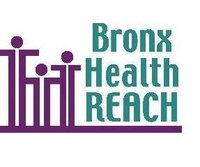CHMP’s Envision Health: Film & New Media co-sponsors The LGBT Film Series at Hunter College April 15, 20, 26th
CHMP’s Envision Health: Film and New Media Series is a proud co-sponsor of this series.
The LGBT Film Series at Hunter College
SAVE THE DATES
April 15th, 20th, & 26th
PUZZLES: When Hate Came to Town – Monday, April 15th at 6 PM
A film by Tami Gold & David Pavlosky explores a brutal attack in a gay bar and provides a window into two very different worlds – the followers of the horror rock band Insane Clown Pose (Juggalos) and into the lives of drag queens. Along the way, PUZZLES reveals an underlying quality that these different worlds share: the abiding need for family.
Gen Silent – Saturday, April 20th at 3 PM
A film by Stu Maddux, Joseph Applebaum, Cathrine Cox, and Barrie Atkin, Gen Silent follows 6 LGBT seniors for over a year to explore how they deal with and conceal their sexual orientation, gender identity, friends, and spouses – in order to survive within the healthcare system. The film covers critical yet often overlooked members of the LGBT community.
It’s Still Elementary – Friday, April 26th 6 PM
A film by Academy Award Filmmaker Debra Chasnoff who will be a featured guest for this event. It’s STILL Elementary presents a follow-up with teachers and students featured in the original film (It’s Elementary—Talking About Gay Issues in School) to see how including LGBT people, lessons, and content in elementary schools changed their lives. It is a call to action for parents and educators to continue working for safe, inclusive schools for LGBT students.
All events are FREE
To attend you must RSVP (register at www.hunter.cuny.edu/the-lgbt-center)
Location: Roosevelt House, 47-49 East 65th Street, NY, NY 10065
Presented by
The LGBT Social Science and Public Policy Center at Roosevelt House Public Policy Institute at Hunter College
Co-sponsored by
The Center for Health, Media & Policy, The Film and Media Department, The School of Education, and The Office of the Provost and President
CHMP's Envision Health: Film and New Media





